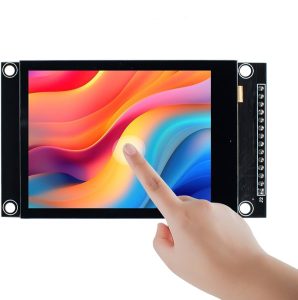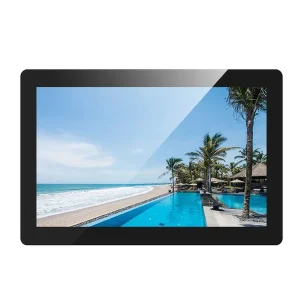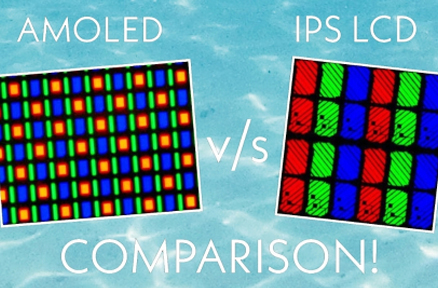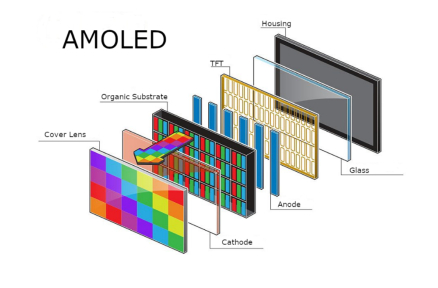Understanding IPS Technology in Monitors
What is an IPS Panel?
IPS panels are a type of LCD technology known for their color accuracy and broad viewing angles, due to the arrangement of liquid crystals that maintain consistent colors regardless of the viewing angle.In contrast to Twisted Nematic (TN) panels that may experience color distortion and have limited viewing angles, IPS panels keep colors vivid and bright, making them ideal for tasks requiring visuals, like design and video editing.
Advantages of IPS Panels
IPS panels have a benefit, in their top notch color accuracy levels that allow for vivid and true to life colors reproduction across a spectrum. This feature is especially valuable for professionals working in industries who need color representation for their projects. Additionally, IPS panels offer wider viewing angles, typically reaching up to 178 degrees both horizontally and vertically. This means that regardless of the viewer’s position, the image remains consistent, making IPS monitors ideal for collaborative workspaces or multimedia presentations.
Drawbacks of IPS Panels
Although IPS panels offer advantages they also possess some limitations noting.The response time stands out as a drawback, in comparison, to TN panels.This can result in motion blur during high speed gaming situations. Ongoing technological advancements are addressing this concern.Furthermore the production cost of IPS panels may be higher leading to an increased retail price tag. Users need to consider these aspects in relation, to their requirements and intended applications to decide if it makes sense to invest in an IPS panel.
Evaluating IPS Panel Performance
Color Accuracy and Reproduction
Evaluating color accuracy in IPS panels involves assessing metrics such as Delta E values, which indicate the deviation from true color. A lower Delta E value signifies that the panel can reproduce colors more accurately. IPS panels typically perform well in this category, often achieving values below 2, which is considered acceptable for professional use. Additionally, it’s important to consider the panel’s ability to cover color spaces such as sRGB, Adobe RGB, and DCI-P3. For those who require precise color reproduction, investigating how well a monitor meets these standards can be instrumental in decision-making.
Viewing Angles Analysis
The viewing angles of an IPS panel are crucial for users who may be sharing screens or working in environments where multiple viewers are present. The IPS technology ensures that colors remain consistent and vibrant from various angles, which is an essential factor for collaboration and presentations. Users can compare the color representation of IPS panels with types side by side to see the variations from angles.A quality IPS panel will keep images to form so that colleagues and clients can view content without any distortion or loss of vibrancy.
Response Time and Refresh Rate
Response time and refresh rate are factors to consider when assessing the effectiveness of IPS panels.They measure how quickly the screen responds to changes in images or colors displayed.A faster response time helps prevent ghost artifacts when viewing paced scenes.As technology advances,making IPS panels quicker and more competitive with TN panels.Refresh rate is also crucial, for gamers as it determines how smoothly images are displayed per second measured in hertz (Hz).IPS displays are now commonly equipped with refresh rates that cater not just to professional tasks but also to gaming needs that demand seamless and fluid graphics.
Assessing Build Quality and Brand Reputation
KADI Display’s Commitment to Quality
When evaluating a monitor, the build quality and brand reputation should not be overlooked, particularly when considering IPS panels. KADI Display has established itself as a reliable manufacturer known for its commitment to quality. Their monitors are often subject to rigorous testing standards; ensuring that each unit meets performance criteria and exhibits durability under various conditions. Customers can feel confident purchasing from this brand, knowing that they are investing in a product backed by a strong reputation in the industry.
Material Quality and Durability
The components utilized in making an IPS panel play a role, in determining its lifespan and how well it functions over time. Premium materials usually result in improved heat dispersion and less flickering along with increased durability. Additionally evaluating the quality of the panels housing, the stability of its stand. The available interface choices aids in gauging its construction quality. Incorporating features like a base and a resilient glass surface can elevate user satisfaction by minimizing wear and tear from usage.
Customer Support and Warranty Options
Lastly it’s important to take into account customer service and warranty offerings when evaluating the worth of an IPS panel. A company that provides customer service and a generous warranty period demonstrates trust in its products and dedication to customer happiness. It’s advisable for consumers to look into the details of warranty coverage including the length and scope of protection, against faults or issues. A reliable warranty can offer reassurance ensuring that any problems that may arise can be addressed without expenses.
Features to Look for in an IPS Panel Monitor
Resolution and Size Options
When evaluating a computer monitor IPS panel, resolution and size options are paramount. The resolution determines the clarity of the images displayed, with popular resolutions including Full HD (1920×1080), Quad HD (2560×1440), and 4K Ultra HD (3840×2160). Higher resolutions provide more detail and are particularly beneficial for professionals in fields like graphic design and video editing, where visual detail is critical. Additionally, users should consider the size of the monitor—common sizes range from 21 inches to 32 inches and beyond. The choice of size directly influences the user’s comfort and productivity, especially in multi-monitor setups.
Ergonomic Design Features
Ergonomic design features are essential for enhancing user comfort and reducing fatigue during long hours of operation. Look for adjustable stands that allow for height, tilt, and swivel adjustments, enabling users to customize their viewing angles based on personal preference and workspace setup.If multiple people will be using the monitor it’s important to consider options that can cater to heights and viewing angles. Some monitors also offer VESA mount compatibility which helps in optimizing workspace and making adjustments easier.
Connectivity Options
Connectivity options available on an IPS panel monitor can significantly influence its versatility and usability in different setups. Users should assess the types and number of ports available, such as HDMI, Display Port, USB-C, and VGA, as these interfaces determine compatibility with different devices. Having multiple ports enables easier switching between devices without the need for constant cable management. Furthermore, some monitors offer additional features such as Picture-in-Picture (PiP), allowing users to multitask effectively by displaying content from two sources simultaneously.
Additional Features: Blue Light Filter, Flicker-Free Technology
Modern IPS panel monitors frequently come with functions to enhance user experience and decrease eye strain levels efficiently.Blue light filter serves as an addition, by decreasing the exposure, to harmful blue light that may cause eye tiredness after prolonged usage.Reducing blue light emissions leads to eye discomfort during extended periods of use.Another advantageous feature is flicker technology which removes the subtle screen flickering found in displays that could result in considerable eye fatigue over time. Both aspects enhance the viewing experience. Are attractive, to both professionals and gamers.
User Experience and Feedback
Reviews from Industry Experts
User experience and expert reviews play an important role in evaluating the performance of an IPS panel monitor. Industry leaders often assess monitors based on specific criteria such as color accuracy, brightness, and performance under different lighting conditions. Reviews from credible sources can provide insights into how well a monitor functions in real-world scenarios and reveal any recurring issues with different models. Gathering feedback from experts can aid potential buyers in making informed decisions, ensuring that their investment aligns with their professional needs and aspirations.
Real-world Use Case Scenarios
In real life situations and applications provide insights, into how an IPS panel monitor functions, in settings and uses. For example, A graphic designer engaged in photo editing tasks would find value in a monitor that delivers precise color representation and broad viewing angles for easy sharing of project feedback. Likewise, Gaming enthusiasts may focus on a monitors speed of response and refresh rate to enhance their gaming experience seamlessly. When professionals examine IPS panels, in real world scenarios they can gain an understanding of how specific features applied in their own areas of expertise.
Evaluating an IPS panel monitor in detail is a multifaceted process. It requires consideration of various factors from performance specifications to user feedback and features. In a market that offers multiple options, taking the time to assess these areas ensures that a well-informed decision can be made, ultimately allowing users to adapt their technology choices to their unique requirements. Investing in the right IPS monitor can result in improved productivity, better collaborative efforts, and enhanced work satisfaction. Investments, in technology like this will benefit both professionals and enthusiasts striving for excellence, in the field of visual display technology.
Latest Blog & News
- How to Choose the Best HMI Touch Screen Panel
- How to Select the Right Screen Ratio and Resolution for Industrial Touch Screens and Monitors
- How to Distinguish the Viewing Angles of LCD Displays
- Tips for Using Touch Screen OLED Display for Raspberry Pi
- OLED vs IPS LCD Display: Which Screen Technology Is Better?











